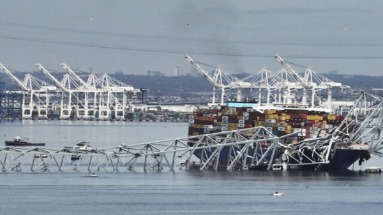
Advertisement
The Francis Scott Key Bridge, situated in Baltimore, falls under the classification of “fracture critical” bridges designated by the federal government. This classification signifies that if any segment of the bridge were to collapse, the entire structure could follow suit. According to data from the Federal Highway Administration, there are over 16,800 such bridges scattered across the United States, each carrying its own risk of potential failure.
Highlighted by the head of the National Transportation Safety Board, the Francis Scott Key Bridge stands out for its deficiency in structural engineering redundancies, which are commonplace in newer bridge designs. This lack of redundancy leaves the bridge more susceptible to catastrophic collapse under adverse conditions or unforeseen events.
Opening its lanes to traffic in 1977, the Francis Scott Key Bridge predates significant advancements in bridge safety standards. Its construction occurred just three years before a tragic incident involving the Sunshine Skyway Bridge in Tampa Bay, Florida. In that incident, a vessel collision resulted in the loss of 35 lives and spurred urgent reforms in bridge design and safety protocols, particularly concerning the protection of foundation piers.
Functioning as one of the primary conduits for crossing the Baltimore Harbor, the Francis Scott Key Bridge facilitated the passage of approximately 31,000 vehicles daily, totaling an impressive 11.3 million vehicles annually. The steel structure spanned four lanes wide and soared 185 feet (56 meters) above the Patapsco River.
Interestingly, the bridge’s namesake, Francis Scott Key, holds historical significance tied to its location. In 1814, after witnessing the British defeat at the Battle of Baltimore and the bombardment of Fort McHenry, Key composed the verses of the “Star-Spangled Banner,” the United States’ national anthem, which further solidifies the bridge’s cultural and historical importance.
